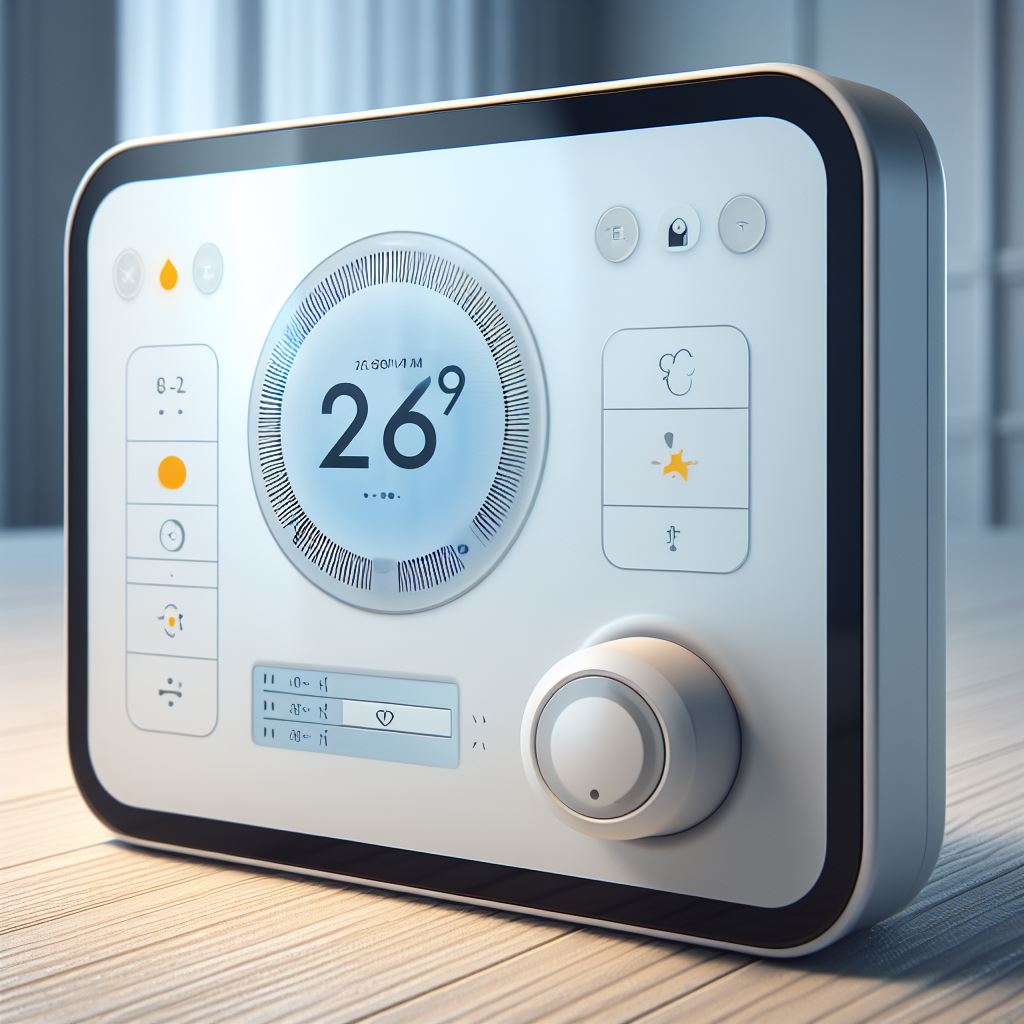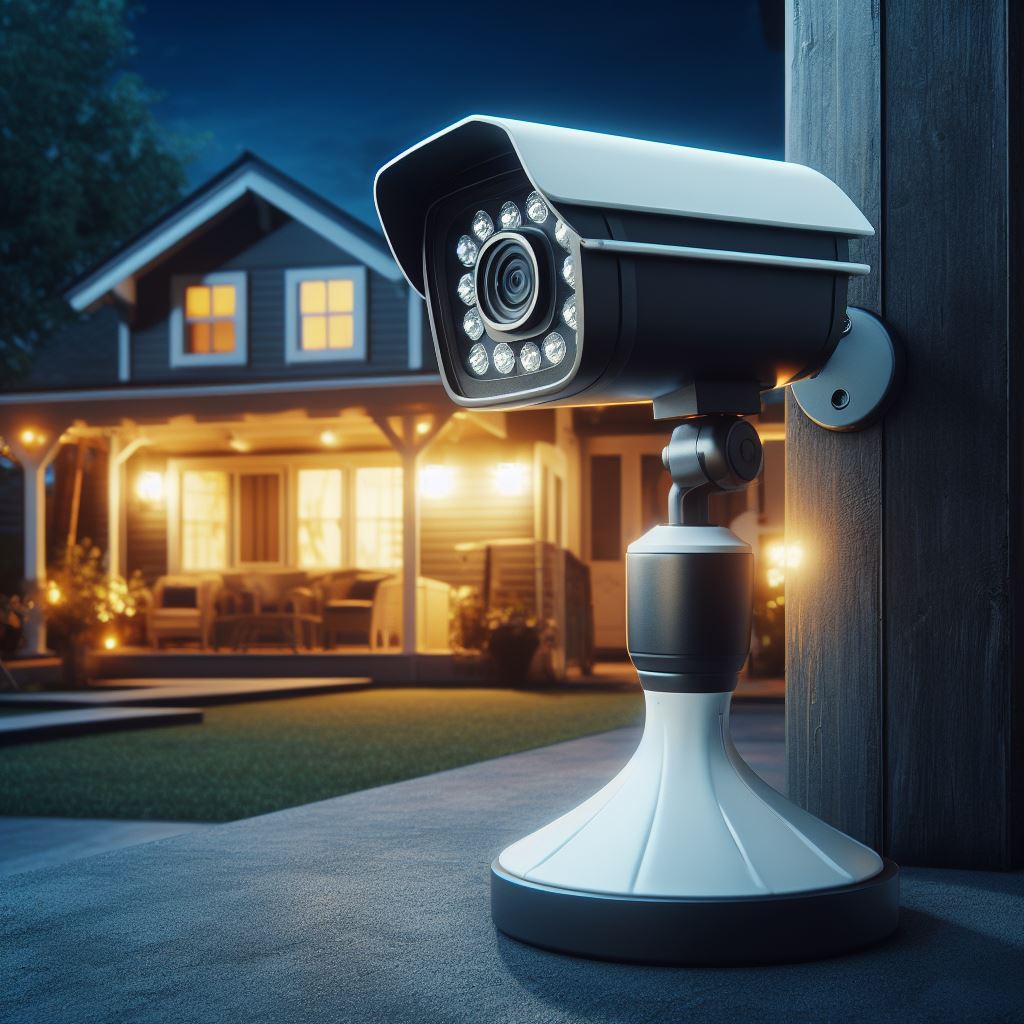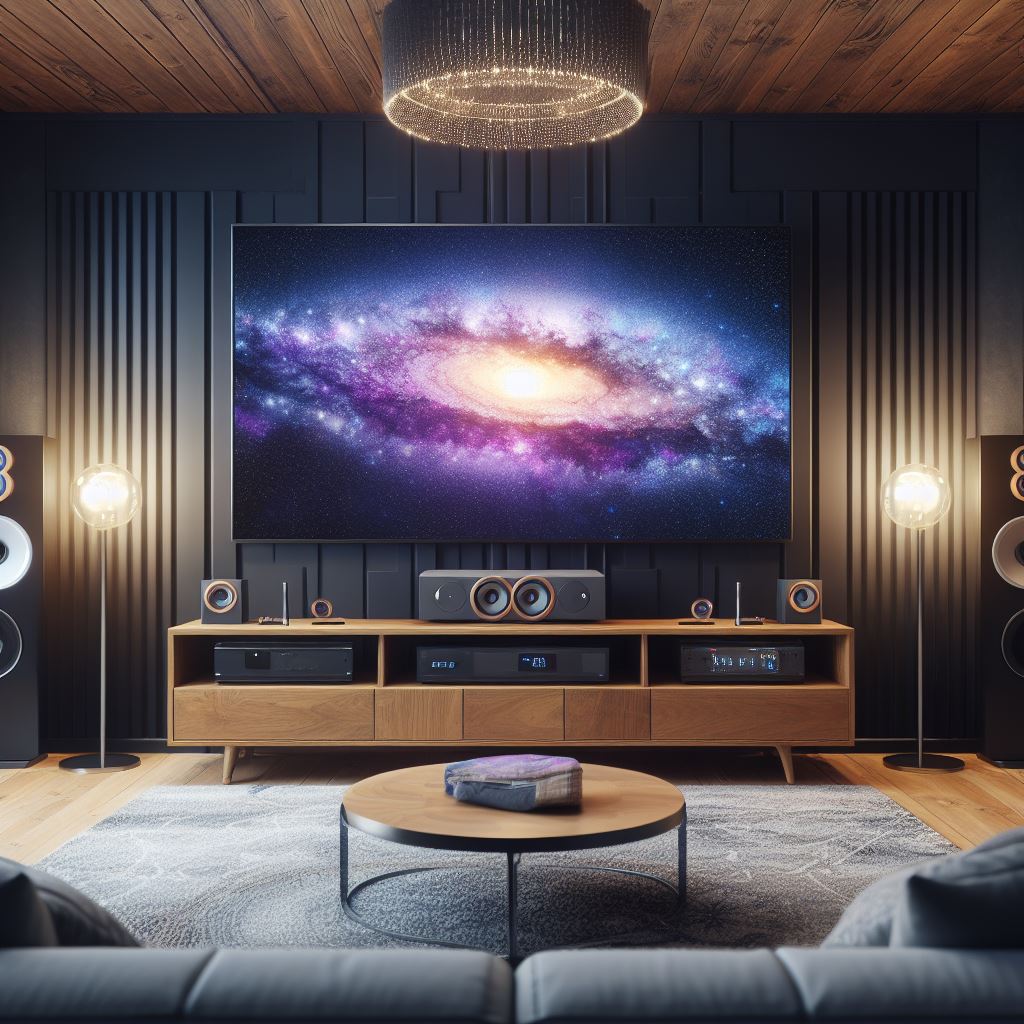Transforming Your Home with Smart Home Technology
Introduction
Welcome to the future of living! Smart home technology has revolutionized the way we interact with our homes, making daily life more convenient, efficient, and enjoyable. In this comprehensive guide, we’ll take you on a journey into the world of smart homes, exploring the incredible possibilities that await you.

Imagine a home that anticipates your needs, adjusts to your preferences, and enhances your security—all with the power of technology. Whether you’re a tech enthusiast or someone looking to simplify your life, smart home technology has something to offer everyone.
Throughout this guide, we’ll provide you with practical insights, step-by-step instructions, and expert tips to help you transform your home into a smart, efficient haven. Let’s embark on this exciting journey together!
Understanding Smart Home Basics
Before we dive into the nitty-gritty of smart home technology, let’s start with the basics. What exactly is a smart home, and how does it differ from a traditional one?
Getting Started with Smart Home Technology
If you’re new to the world of smart homes, don’t worry—we’ve got you covered. Getting started with smart home technology is easier than you might think. Let’s break it down into simple steps:
Step 1: Assess Your Needs and Goals
Start by thinking about your specific needs and goals. What aspects of your home life do you want to simplify or enhance with smart technology? It could be anything from improving security to reducing energy consumption.
Step 2: Budget and Compatibility
Next, consider your budget. Smart home technology comes in various price ranges, so it’s essential to set a budget that works for you. Additionally, check the compatibility of devices with your existing technology. Ensure they work seamlessly together.
Step 3: Begin with the Basics
If you’re new to smart homes, it’s a good idea to start with the basics. Here are a few fundamental devices to consider:
- Smart speakers with voice assistants
- Smart plugs for easy control of appliances
- Smart lighting for convenience and energy savings
- Smart thermostats for climate control
These devices offer a great entry point into the world of smart technology and can make a noticeable difference in your daily life.
Step 4: Set Up and Connect
Once you’ve chosen your devices, it’s time to set them up. Most smart devices come with user-friendly apps that guide you through the installation process. Connect them to your Wi-Fi network and configure them according to your preferences.
Step 5: Explore Automation
One of the standout features of smart homes is automation. You can create routines and schedules that automate tasks like adjusting your thermostat, turning off lights, or locking doors. Automation saves you time and energy.
With these simple steps, you’ll be well on your way to transforming your home with smart technology. In the following sections, we’ll delve deeper into specific aspects of smart homes, including security, energy efficiency, entertainment, and more.
Choosing the Right Smart Home Ecosystem
As you explore the world of smart technology, you’ll encounter different ecosystems or platforms—each with its own set of compatible devices and capabilities. Choosing the right ecosystem is a crucial decision in your smart home journey.
What Is a Smart Home Ecosystem?
A smart home ecosystem is a collection of devices and services that work together seamlessly. The two most popular ecosystems are those by Google (Google Home) and Amazon (Amazon Alexa), but there are others like Apple’s HomeKit and Samsung SmartThings.
Choosing Your Ecosystem
Here are some factors to consider when selecting the right ecosystem for your needs:
- Compatibility: Ensure that the ecosystem you choose supports the types of devices you want to use. Check for compatibility lists on the manufacturer’s website.
- Voice Assistant: Consider which voice assistant you prefer. Google Assistant and Amazon Alexa are the most common options, each with its strengths.
- App Experience: Evaluate the user-friendliness of the ecosystem’s mobile app. You’ll be using it to control your smart devices.
- Integration: Some ecosystems integrate with third-party services like streaming platforms and home security systems. See if the ecosystem supports your preferred integrations.
The Advantages of Ecosystem Integration
Opting for an ecosystem allows for better integration between devices. For example, you can use a single voice command to control lights, thermostats, and music if they’re all part of the same ecosystem. This streamlines your experience and enhances convenience.
Starter Kits and Bundles
If you’re just beginning your smart home journey, consider starter kits or bundles offered by ecosystem providers. These kits typically include essential devices and a hub to get you started.
Choosing the right ecosystem is a personal decision based on your preferences and the devices you plan to incorporate into your smart home. Remember that most ecosystems are expandable, so you can gradually add more devices as you become more comfortable with the technology.
Enhancing Home Security with Smart Technology
Your home’s security is paramount, and smart technology offers innovative solutions to help you protect what matters most. In this section, we’ll explore how you can enhance your home security with smart devices.
Smart Locks for Added Convenience
One of the first steps in securing your home is upgrading your locks. Smart locks provide added convenience by allowing keyless entry through your smartphone. You can also grant access to guests remotely.
Security Cameras with 24/7 Monitoring

Installing security cameras inside and outside your home provides you with 24/7 monitoring. Many cameras offer features like motion detection and night vision, ensuring you’re always aware of what’s happening around your property.
Smart Sensors and Alarms
Smart sensors placed on doors and windows can alert you to potential intrusions. Pair them with smart alarms that not only sound an alert but also send notifications to your smartphone when triggered.
Integration with Voice Assistants
Integrating your security devices with voice assistants adds an extra layer of convenience. You can check camera feeds or arm your security system with simple voice commands.
Remote Monitoring and Control
One of the significant advantages of smart security systems is the ability to monitor and control your home remotely. Whether you’re at work or on vacation, you can check in on your home using your smartphone.
Emergency Response Integration
Some smart security systems offer integration with emergency response services. In case of a security breach or fire, the system can automatically alert the appropriate authorities, providing you with peace of mind.
Investing in smart home security not only protects your property but also provides you with valuable insights into what’s happening in and around your home. Whether you’re concerned about burglary, fire, or simply want to keep an eye on your front porch, smart technology has a solution.
Creating a Smart and Energy-Efficient Home
Aside from security, energy efficiency is another significant benefit of smart home technology. In this section, we’ll explore how you can create a smart and energy-efficient home environment.
Smart Thermostats for Climate Control
One of the key contributors to energy consumption in a home is heating and cooling. Smart thermostats allow you to optimize your HVAC system’s performance. They can learn your preferences and adjust temperatures accordingly, saving both energy and money.
Smart Lighting for Convenience and Savings

With smart lighting, you can have complete control over your home’s lighting. Set schedules, create lighting scenes, and even adjust brightness levels—all from your smartphone. This not only enhances convenience but also reduces energy waste.
Energy Monitoring and Insights
Many smart home systems provide real-time energy monitoring. You can track how much energy different appliances and devices are using, helping you identify areas where you can cut back and save.
Automated Energy Savings
Automation is a game-changer for energy efficiency. Set up routines to turn off lights, adjust thermostats, and power down devices when they’re not in use. This ensures you’re not wasting energy when it’s not needed.
Smart Blinds and Shades
Control natural light with smart blinds and shades. These can automatically adjust throughout the day to optimize natural lighting and reduce the need for artificial lighting and cooling.
Whole-Home Energy Management
For a holistic approach to energy efficiency, consider a whole-home energy management system. These systems can coordinate all your smart devices to maximize energy savings.
By incorporating smart technology into your home, you can significantly reduce your energy consumption, lower utility bills, and contribute to a more sustainable future.
Entertainment and Comfort in Your Smart Home
Smart technology isn’t just about efficiency and security; it’s also about enhancing your daily comfort and entertainment. In this section, we’ll explore how you can create a more enjoyable living environment with smart home devices.
Smart Home Theater Experience

Transform your living room into a state-of-the-art home theater with smart technology. Enjoy immersive entertainment with features like 4K Ultra HD, surround sound, and voice-controlled playback.
Whole-Home Audio
With whole-home audio systems, you can enjoy music in every room. Stream your favorite tunes from your smartphone or voice assistant and set the mood throughout your home.
Voice-Activated Assistants

Speaking of voice assistants, they play a central role in smart homes. Use them to control lights, thermostats, music, and even ask questions or receive news updates hands-free.
Smart Kitchen Appliances

Cooking becomes a breeze with smart kitchen appliances. From voice-controlled ovens to coffee makers that prepare your brew as you wake up, these gadgets make your kitchen more efficient and fun.
Customized Ambiance
Smart lighting isn’t just about saving energy; it’s also about creating the perfect ambiance. Set the mood for dinner parties, movie nights, or relaxation with customizable lighting scenes.
Vacation Simulation
When you’re away on vacation, smart home technology can simulate your presence. Smart lights can turn on and off at scheduled times, making it appear as if you’re home, enhancing security.
Your home should be a place of comfort and enjoyment, and smart technology can help you achieve just that. From entertainment systems that immerse you in your favorite movies to a kitchen that simplifies meal preparation, the possibilities are endless.
DIY Projects and Customization
If you’re the type who loves to get hands-on and customize your living space, smart home technology offers ample opportunities for DIY projects. In this section, we’ll delve into some creative ways to enhance your smart home.
Smart Home Automation Routines

Create custom automation routines to fit your unique needs. For example, set up a “Good Morning” routine that turns on lights, adjusts the thermostat, and plays your favorite morning playlist when you say the magic words.
Voice Assistant Custom Commands
Personalize your voice assistant’s commands. Instead of saying “Turn on the living room lights,” you can say something like “Movie time” to achieve the same result. It adds a fun and customized touch to your smart home experience.
Smart Garden and Plant Care
If you have a green thumb, smart technology can help you take care of your plants. Smart plant sensors can monitor soil moisture, light levels, and temperature, sending you alerts when your plants need attention.
DIY Smart Mirror
Get creative with a DIY smart mirror project. By embedding a two-way mirror with a display behind it, you can have a mirror that also shows you the weather forecast, news headlines, and more. It’s both functional and stylish.
Customized Smart Lighting Scenes
Take your smart lighting to the next level by creating customized scenes. You can design scenes for different occasions, such as “Party Mode” with vibrant colors or “Relaxation Mode” with soft, warm lighting.
Home Security Enhancements
Enhance your home security with DIY projects like creating hidden camera enclosures or designing a smart doorbell with unique features. These projects add a personal touch to your security setup.
Exploring DIY projects in the world of smart home technology allows you to tailor your home automation to your preferences. It’s a fantastic way to add character and functionality to your living space.
Privacy and Security in Your Smart Home
While smart technology offers numerous benefits, it’s essential to address privacy and security concerns. In this section, we’ll discuss best practices for ensuring your smart home remains safe and secure.
Regular Software Updates
Keep your smart devices and their associated apps up to date. Manufacturers often release software updates that patch security vulnerabilities. Enable automatic updates whenever possible.
Strong and Unique Passwords
Ensure that all your smart devices are protected by strong, unique passwords. Avoid using default passwords, and consider using a password manager to keep track of them securely.
Network Security
Secure your home Wi-Fi network with a strong password and encryption. Set up a separate guest network for visitors to keep them away from your smart devices.
Two-Factor Authentication (2FA)
Whenever possible, enable two-factor authentication (2FA) for your smart device accounts. This adds an extra layer of security by requiring a verification code in addition to your password.
Review App Permissions
Regularly review the permissions granted to smart device apps. Only allow necessary permissions and revoke any that seem excessive or unnecessary for the device’s function.
Disable Unused Features
If your smart devices come with features you don’t use, consider disabling them. Fewer active features mean fewer potential security vulnerabilities.
Secure Physical Access
Ensure that physical access to your smart devices is restricted. For example, keep smart locks and cameras out of reach from potential tampering.
By following these best practices, you can significantly reduce the risk of security breaches and protect your privacy in your smart home.
Conclusion and Call to Action
Congratulations! You’ve embarked on a journey into the world of smart home technology, and you’re now equipped with the knowledge and insights to transform your home into a smart, efficient, and secure haven.
As you explore the endless possibilities of smart technology, remember that your smart home is a reflection of your preferences and needs. Customize it to enhance your daily life and enjoy the convenience, entertainment, and security it offers.
Are you ready to take the next step in your smart home journey? Subscribe to our newsletter for the latest updates, in-depth guides, and exclusive tips on simplifying your life with smart home technology. Don’t miss out on the future of living – subscribe now!
